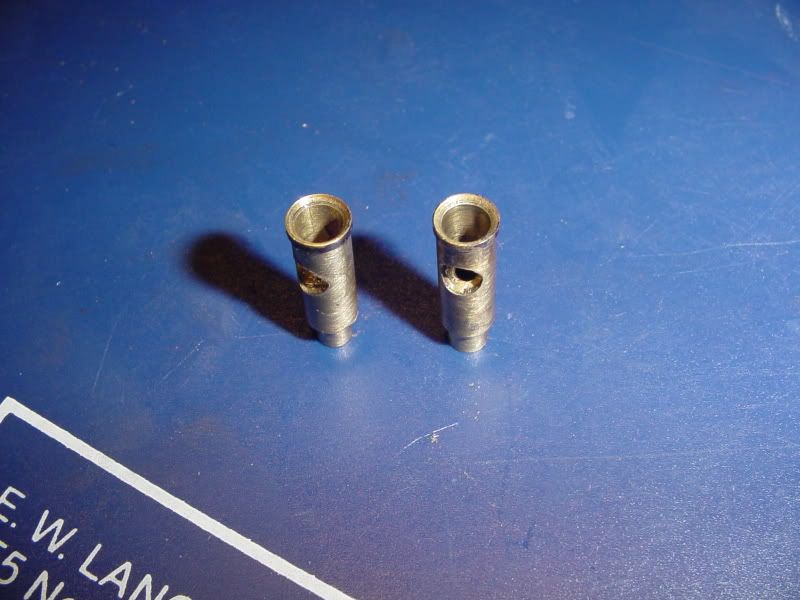Many of you have followed my struggles with the Kerzel engine, trying to get the valves to seal. As originally built, I couldn't get the valves to seal on the innner surface of the cylinder head, and finally in the process of trying to save the cylinder head, I made a set of valve cages from brass and installed them. And then they wouldn't seal either. Meanwhile I was desperatly seeking guidance from anyone with a good idea of what it was that I needed to do to achieve a good valve seal. Finally, it was reading a post from John Bogstandard that I seen the recomendation that the actual seat area should be very very small--as in 0.010 to 0.015" inches. Thats almost a line contact. I removed the first set of valve cages I had built and made a second set with a VERY small contact area, and with the help of some 350, 400, and 600 grit lapping compound was able to achieve a good tight valve seal and the compression my engine so badly needed. Today as I was rummaging thru collected bits and peices, I ran across the first set of valve cages I had made and installed. No wonder they didn't work. Look at the 45 degree valve seat area.---Its huge. Far to huge as it turns out to get an aduquate valve seal on, no matter how much I lapped them. You CAN teach old dogs new tricks, and as I strive for the mastery of machining and building model engines, this is a new trick I have learned. SO--If you set out to build valve cages for an I.C. engine, please don't build them like the ones in the picture. That 45 degree sloped valve seat area should be kept to 0.010" to 0.015", NOT WHAT IS SHOWN HERE!!!---Brian, the Old Dog






